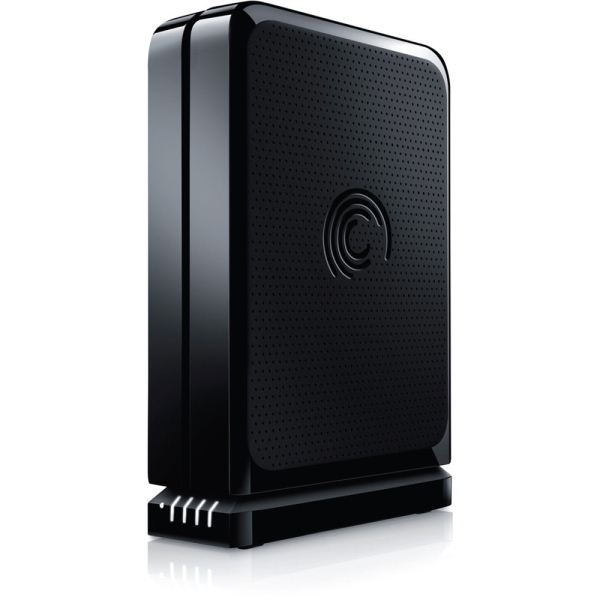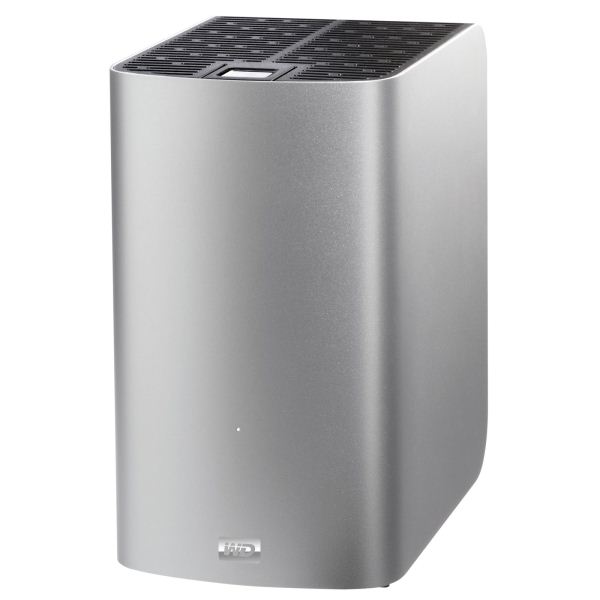A Tale Of Two Thunderbolt Storage Devices: Seagate's GoFlex Desk and Western Digital's Thunderbolt Duo
by Brian Dipert on May 13, 2012 7:52 PM EST- Posted in
- Thunderbolt
- Seagate
- WD
- Western Digital
I remember the early days of the USB-vs-FireWire wars like they were yesterday, although Wikipedia reminds me that they were more than a decade ago (sigh). USB 1.0 arrived in 1996 but didn't begin to see broad adoption until two years later with version 1.1. When FireWire 400 (aka IEEE 1394a) emerged on Apple systems in 1999, its backers scoffed at USB's comparatively diminutive 11 Mbps peak (and much lower practical) bandwidth.
Intel and its partners' response was swift; USB 2.0 came on the scene in 2000. Its 480 Mbps theoretical peak bandwidth, coupled with Intel's refusal to integrate FireWire support within its core logic chipsets, doomed FireWire to niche status in spite of the subsequent emergence of the 800 Mbps IEEE 1394b variant.
Yet as anyone who's used a USB 2.0 hard drive or flash drive knows, the external bus's read and write performance still leave a lot to be desired, especially for video and other large-file-size material. eSATA attempted to address the issue, but its storage-centric focus left OEMs unwilling to adopt it en masse, from both incremental-cost and incremental-connector perspectives. What the industry wanted was an equally versatile but speedier successor to USB 2.0...
...and now it's got two. Yep, another standards war - except not in the traditional sense, these two are complementary. The USB 3.0 specification was released in late 2008, with first products available beginning one year later. Designed primarily as a replacement for USB 2.0, it delivers 4.8 Gbps transfer speeds, along with discrete transmit and receive data paths. And courtesy of Intel's Ivy Bridge integration, USB 3.0 will soon become pervasive in a diversity of PC platforms and form factors. But more than a year ago, Intel and partner (and customer) Apple productized a copper-based version of an Intel-proprietary interface called Thunderbolt, formerly known as Light Peak.
Each Thunderbolt port handles 40 Gbps of aggregate bandwidth, consisting of two pairs' worth of distinct 10 Gbps transmit and receive lanes. Thunderbolt isn't so much about enabling the connection of discrete storage devices (although it has been used for just that by many early peripherals), but new PC form factors instead. If you have to give up GigE, Firewire 800 and a gigantic screen to build a sleek Ultrabook, Thunderbolt will give you access to those things via an external display. Did I mention that Thunderbolt carries DisplayPort as well as PCIe?
To date Thunderbolt has mostly only appeared on Macs, but the Apple exclusivity period is now over. This year we'll see the emergence of more affordable second-generation controller ICs, resulting in Thunderbolt showing up in a diversity of PC platforms and form factors.
Anand has done several in-depth Thunderbolt peripheral reviews so far:
- Promise Pegasus R6 & Mac Thunderbolt Review (7/8/2011)
- The Apple Thunderbolt Display Review (9/23/2011)
- LaCie Little Big Disk (2TB) Review: More Affordable Thunderbolt Storage (10/31/2011)
- LaCie Little Big Disk (240GB SSD) Review (11/8/2011), and
- LaCie 2big Thunderbolt Series Review (2/25/2012)
Today we've got two more products up for evaluation; Seagate's 2 TByte GoFlex Desk HDD coupled with the company's just-in-production Thunderbolt Adapter:
and Western Digital's two-HDD Thunderbolt Duo.
Let's have a look, shall we?












46 Comments
View All Comments
name99 - Monday, May 14, 2012 - link
"Given that the PCI Express channel of the Thunderbolt interface delivers 10 Gbps of peak bandwidth in either direction, I next decided to see what would happen if I tethered the Seagate and WD drives together."You can do even better than this. You should have been able, in Disk Utility, to create a striped drive consisting of the two WD drives and the Seagate drive. This would be gated by the speed of the slowest drive, so should give you around 360MB/s read and write speeds.
Disk Utility is not perfect, and god knows I've sent Apple long lists of ways it can be improved; but it is pretty awesome for basic things like creating either striped arrays or large concatenated arrays.
bdipert - Monday, May 14, 2012 - link
Dear name99, that's a great idea. I'm traveling at the moment but will give it a shot when I get back in front of the Mac mini. I agree with you that it conceptually should work, and will be performance-gated by the drives in the Thunderbolt Duo.Torrijos - Monday, May 14, 2012 - link
You talked a bit about the impact of running a soft-RAID device being negligible, it would be nice to know the impact on the OS when pushing those mass storage devices to the limit.I've bought an USB3 extension card for my mac and while transfer speed are great, OS responsiveness takes a hit every time a big transfer occurs (TM backups are a pain).
A formal test of the impact of USB 3, ThunderBolt would be nice.
repoman27 - Monday, May 14, 2012 - link
Have you watched Activity Monitor during a TM backup to see what's being stressed? I usually associate the performance drop during TM backups with the crazy amount of small random reads that need to be performed on the system volume while you're still trying to use it.Draconian - Monday, May 14, 2012 - link
So basically, if you're really concerned about performance, an SSD using an old 3 Gbps connection will read and write twice as fast as a HDD using a Thunderbolt connection?I would be interested in knowing what the results would be with a HDD using an eSATA connection. And of course USB 3.0.
jabber - Monday, May 14, 2012 - link
......companies selling 7N Thunderbolt cables that cost them $3 to make but selling them to audiophiles for $3000 a go.Glindon - Monday, May 14, 2012 - link
Each connector of the thunderbolt cable has a small chip, which is why the cable costs so much. It's not just a $50 cable. iFixit has done a tear down of the cable if you want to check it out.repoman27 - Monday, May 14, 2012 - link
There are quite a few factors which make Thunderbolt cables expensive, being an active design is just one of them. If you ignore the bit about Thunderbolt being intended for iOS devices, the following blog post reveals quite a few details:http://www.patentlyapple.com/patently-apple/2012/0...
I think the snake oil salesmen that prey on the audiophiles will avoid Thunderbolt for some time, specifically because it is an expensive to manufacture, high bandwidth cable that can't be made for $3. A 2.0 m copper pipe that can carry 20 Gbps, full-duplex, plus bus power and out-of-band signaling just doesn't exist yet in the sub $20 realm.
quiksilvr - Monday, May 14, 2012 - link
You pay an arm and a fucking leg for these things and they don't even have the god damn decency to give you the wire?CalaverasGrande - Monday, May 14, 2012 - link
Just like on the MAc centric forums, people can not look past their narrow usage scenario to accommodate other perspectives.I work at a TV station, but have a background in audio production. In most prosumer studios, and quite a few mid level studios, firewire is the connection of choice for audio interface (soundcard). The high end audio interfaces have until recently all been either a PCIe card or Firewire. Add to the pile firewire based DSP such as the UAD-2 and firewire disk arrays used to insure fault tolerant and fast nearline storage.
In video production we really don't use 1394 anymore. But there are still some old boxes in use that have the mini connector. Often they get pressed into use as a transcoder or layback machine for formats we dont use natively anymore. We are all on Sony XDcam disk, which I would love to see as a consumer format!
I personally can't wait to see wider adoption of thunderbolt. I plan on upgrading to a T-bolt equipped mac after the next refresh of the MBP line.